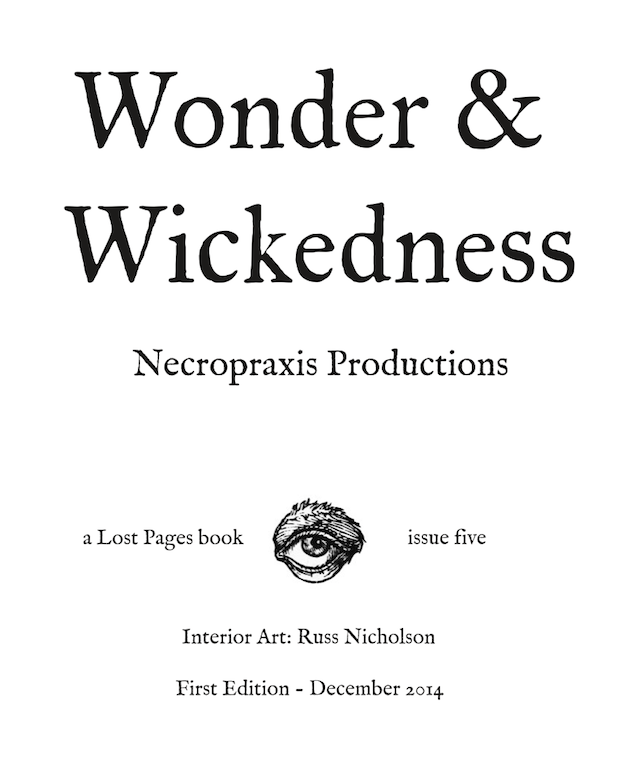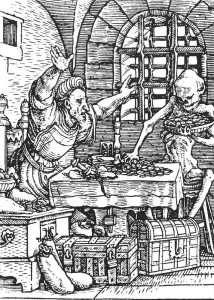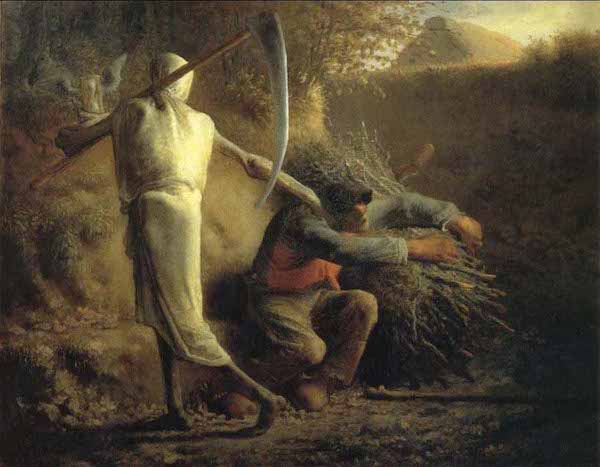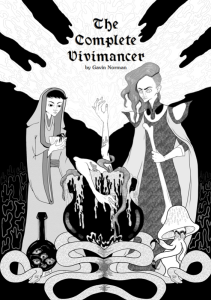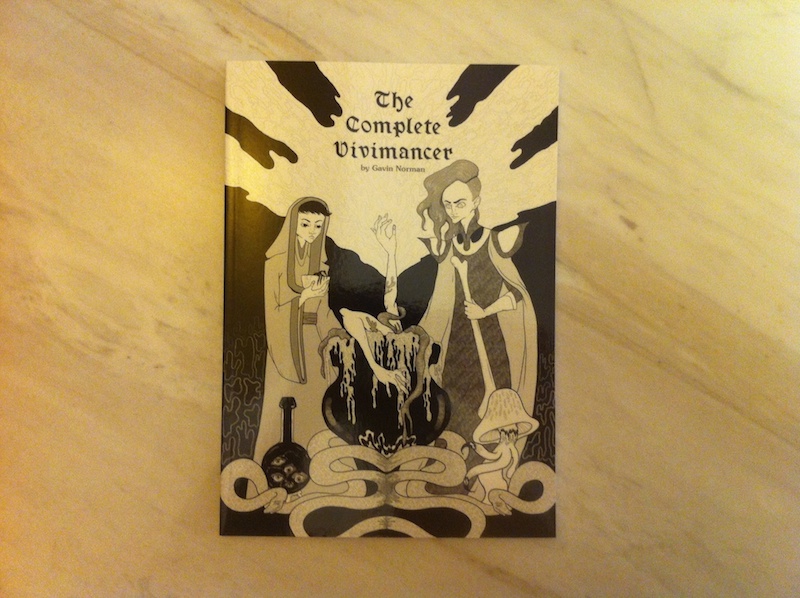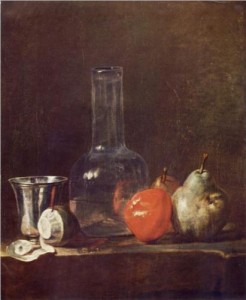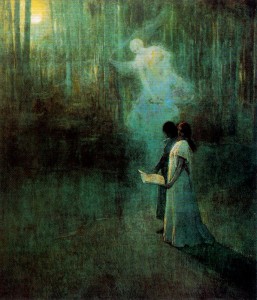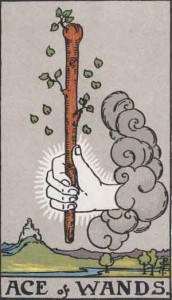I have been experimenting with an approach to learning spells inspired by AD&D’s intelligence derived % chance to learn system. The goal is to individuate magicians by the spells that they are able to learn during play. My own issue is that the magic stat in the rules that replaces intelligence and controls most aspects of sorcery increases somewhat predictably, making it easier to learn spells if you wait, which is a dynamic that I do not want. I did come upon a solution (or rather, someone suggested something that I think will work), but that is not what this post is about.
While discussing the problem on Google Plus, Benjamin Baugh threw out an idea that I thought was worthwhile even though it did not fit exactly what I was going for, and I suggested that it was worth a blog post of its own so as to not be forgotten. As Benjamin does not maintain a blog, I thought it would make a good guest post, and he liked the idea as well. All words below here are Benjamin’s.
I riffed this originally on a g+ post of Brendan’s related to how a magician would learn spells in his old school game’s magic system. It was too verbose for his tightly focused ruleset, but he invited me to expand on it, and host it as a guest column on his blog, so here we are.
I’d originally tossed this out as a way to see if a old school mage could learn a given spell, with the chances being modified by the effort they put into the magical study and what they risk up front to learn it.
I went with one of the simplest possible old school mechanics – the X chance in 6. I also didn’t include anything like level or ability modifier, though there’s no reason you couldn’t do this too for something a little fiddlier. You could expand the range as well, making the check based on 2d6, and using the Basic reaction table’s range of outcomes. But for now, I’m going to stick with the chance in 6, as it’s dead simple, and keeps the effort focused on player choice and character action rather than stats.
You could use this kind of scheme–with different risks and investments–for other downtime actions, like making contacts, hiring retainers, sourcing rare equipment, accessing specialist services (like curse removal or resurrection). You could expand on it, and turn it into a general purpose ritual magic system.
So to start, here’s the basic scheme for learning new magic. All the things invested in the learning process are committed before the die is rolled, and lost if it fails. Them’s the breaks. This scheme is especially advantageous in B/X and other editions which don’t have a system in place for learning spells outside of those granted by character leveling.
The basic chance to learn a spell is 1 in 6.
You might rule that the basic chance requires some reference – a scroll, spellbook, or instructor. Or, you could rule that with those reliable basics, you don’t need to make a check to learn a spell, and the following scheme is for personal experimentation. It works however you position it.
Each risk or investment you make in the process expands your chances by 1.
It will be possible to take on as many of these as you like – and with five, you can learn a spell without any chance of failing. But, the process is going to be fraught, and there’s going to be consequences.
To keep things interesting, you can rule that a character can’t use the same risks or investments twice in a row.
Take extended downtime, requiring weeks of seclusion. The character is unavailable to play during at least one session, possibly longer.
Expend high quality materials – magical reagents, experimental apparatus, baths of ritually purified mud, inks made from monster blood, sheets of colored crystal, incense, oils. This costs you up front d6+spell level x 10 gold.
Invoke Demonic Aid – there are many otherworldly creatures willing to aid a spellcaster in his studies, for a small price. Such a small price. A magician has a lunar month to meet the price, and if he fails to do so, the knowledge of the spell curdles in his brain, becomeing useless – and that spell may never be learned again. Roll 6d6 to see who you invoke…
|
d6
|
|
|
|
|
|
|
|
1
|
Gar’
|
Kolmabach
|
of the Hateful Face
|
demands
|
Joyous
|
Lie
|
|
2
|
Tur’nok-
|
Sek
|
the Moon-Eating Maw
|
commands
|
Vengeful
|
Theft
|
|
3
|
Silough-Ma’
|
Omon-Po
|
Who’s Wings Blacken the Sky
|
requires
|
Hateful
|
Murder
|
|
4
|
Durgen’opah
|
Sif Sanar
|
the Hungry Childe
|
‘suggests’
|
Unjust
|
Slander
|
|
5
|
Xaxaxaxxax-
|
Bloone
|
of the Thousand Eyes
|
orders
|
Deadly
|
Betrayal
|
|
6
|
Zef-Neh’
|
Shakan Gu
|
the Whisperer
|
ordains
|
Secret
|
Gluttony
|
Mortify the flesh to exalt the spirit. Ritually deny the body, castigate the flesh, use bloodletting, leeches, sweat lodges, or other methods to invoke altered states of consciousness with extremities of pain and deprivation. Suffer a d4+spell level Con loss, which returns only slowly.
Pick up a Habit. There are many formulations of herb and alchemy which expand the consciousness and open the inner eye. Many magicians find these dream drugs enhance their perceptions of magical realities. Using such drugs in quantity is a way to discern occult insights, but risks addiction. Spend d6x10 gold on occult drugs, and make a Save vs Poison. Success on the save means you are free of addiction. Failure means you pick up a nasty habit. Without at least 3d6 gold worth of the drug in your system each day, you are at -1 on all checks and rolls, and can memorize one spell less from each level you can cast. Only high level curative magic or extended downtime with the Brethren in the mountains can cure this addiction. It is possible to have more than one addiction, and the effects of detoxing are cumulative.
Perform Risky Experiments. Suffer a d6 damage per spell level. Save vs Spell for half damage. This might kill you. If it does kill you, you are dead.
Bribe a powerful mage to tutor you. A more powerful spellcaster might be induced to aid your studies and share her knowledge, but magi are jealous of their power, and their integrity does not come cheap. This will cost a d6x100 gold pieces, but this cost can be reduced by finding leverage with which to blackmail, intimidate, or otherwise force the wise one to share her secrets. This costs nothing, but earns an enemy.
Cause a Magical Catastrophe. Your experiments release terrible magical contamination into the area, with character, range, and severity based on the level of spell being learned. This poisons your reputation locally as surely as it poisons the land – you and those associated with you will be unable to buy and sell in the area, and hirelings from the area will abandon you or refuse to answer the call. There might be local legal sanction as well, if you stick around to find out. If done in the wilderness, this this contamination is the seed of a tainted land, and will attract dark things.
Allow the magic to mark you. The magical revelation marks your flesh permanently, altering your appearance in weird, grotesque, or horrific ways. You have a harder time convincing hirelings to join you, and those you meet on your adventures will be more wary of you. Your charisma is reduced by 1 permanently. The changes wrought on your flesh will be in character with the spell being learned.
Take on an Apprentice. They say the best way to learn is to become a teacher. In exchange for helping you with your studies, the local magic guild, college, or counsel of crotchety old bastards sticks you with an apprentice. You must teach the surly youth the ways of magic, keep them from harm, and see that they do not get into trouble. You are responsible for their health and their actions, and officially anyhow, they must call your Master and obey your will. Roll 6d6.
|
d6
|
|
|
|
|
|
|
|
1
|
Beechum
|
Hogsgutter
|
the Foundling
|
a surly
|
fat
|
youth
|
|
2
|
Plok
|
Weaver
|
the Butcher’s Child
|
a smart-arsed
|
dapper
|
idiot
|
|
3
|
Veenian
|
Smithsget
|
the Lord’s Heir
|
an ever-smiling
|
naive
|
liar
|
|
4
|
Shian
|
Pyronian
|
the Chosen One
|
a hot tempered
|
hungry
|
thief
|
|
5
|
Saria
|
Tup
|
the Privy Cleaner
|
an inept
|
sweaty
|
drunk
|
|
6
|
Ish
|
Derbian
|
the Prodigy
|
a gormless
|
little
|
student
|

